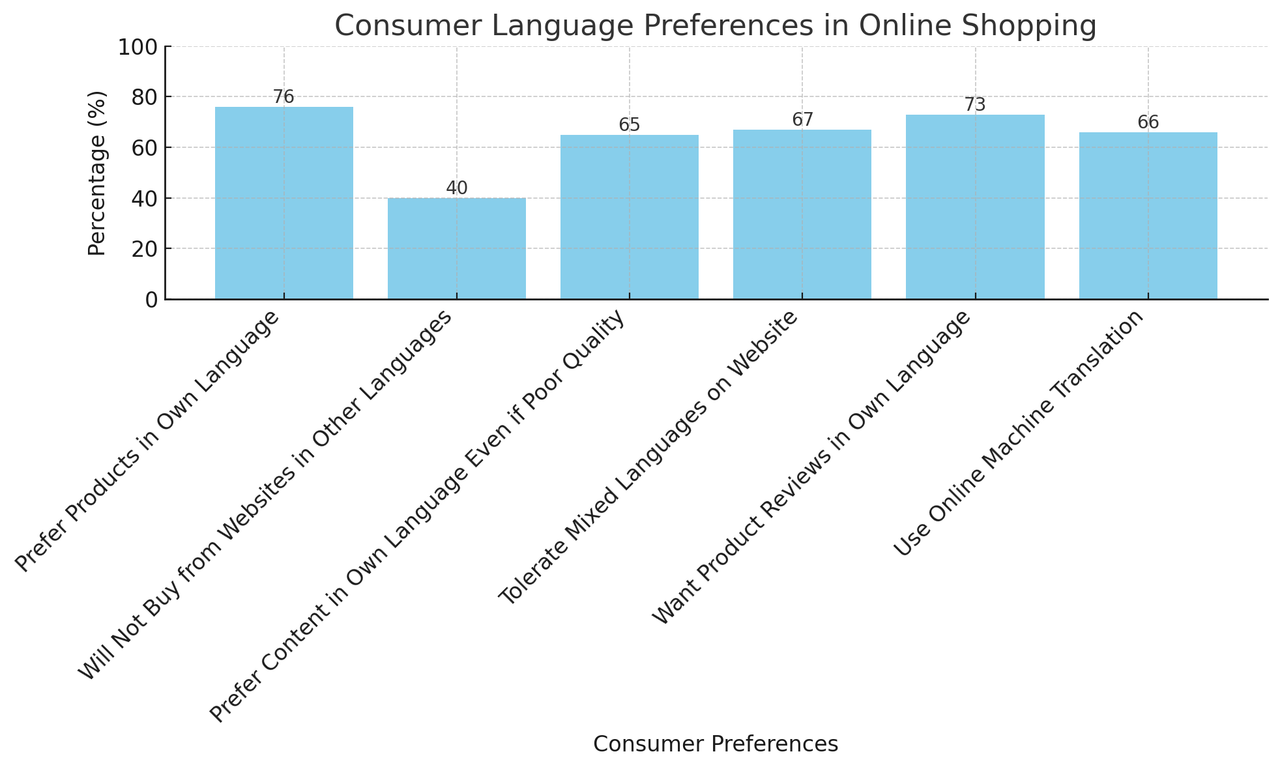Translate 100,000 words for free at MachineTranslation.com by Tomedes
Cross-Cultural Marketing Considerations, Tips, and Examples
In this article, we explore the critical aspects of cross-cultural considerations in global marketing, exploring how they shape strategies, communication, and, ultimately, the success of international business endeavors. Embracing cultural diversity and adapting to local contexts is the cornerstone of effective global marketing, ensuring that messages resonate with audiences meaningfully and respectfully.
What is Cross-Cultural Marketing?
Cross-cultural marketing is the creation and adaptation of marketing strategies to appeal to diverse cultural groups. This involves considering unique values, behaviors, and preferences to ensure relevance and effectiveness in different global markets.
Cross-cultural marketing transcends mere translation – involving localization to align with specific cultural, linguistic, and consumer preferences of target markets. This approach enables businesses to connect with various markets and enhance their brand presence.
How Are Cross-Cultural Marketing Strategies Developed?
Despite sharing the Spanish language, marketing for Spain differs significantly from Mexico due to distinct cultural contexts, consumer behaviors, and regional idioms. Tailoring strategies to each country’s unique cultural nuances is essential for effective engagement and resonance.
-
Conduct Research for Your Target Market: Researching your target market’s cultural norms, values, and behaviors is foundational in cross-cultural marketing, guiding all actions and minimizing the risk of cultural misunderstandings.
-
Tailor Your Messages and Aesthetic Elements: Understanding your target market is vital to creating relevant and appealing content that fosters a stronger connection and boosts marketing effectiveness.
-
Develop Content/Programs for Your Ideal Clients: Creating content and programs tailored to your audience's interests and daily lives enhances cultural sensitivity, engagement, and brand loyalty.
-
Partaking in Collaborations to Boost Awareness: Partnering with local businesses or influencers enhances marketing, offering insights, credibility, and broader reach while bridging cultural gaps and positioning your brand effectively in new markets.
-
Retain Clients Through Localized Customer Support: Localized customer support, sensitive to regional languages and customs, boosts satisfaction, trust, and loyalty, demonstrating market commitment and fostering enduring customer relationships.
Benefits and Challenges of Marketing to Various Cultures
While the benefits of marketing to various cultures are substantial, it's imperative to acknowledge the challenges accompanying this endeavor. Navigating these challenges is crucial for the successful implementation of cross-cultural marketing strategies.
Navigating Challenges
With its goal being to engage various cultures and markets, cross-cultural marketing is naturally accompanied by linguistic challenges. Mere direct translations can lead to misinterpretations, which could potentially lead to offenses and loss of trust. Effective adaptation is critical to respecting cultural sensitivities and maintaining message efficacy. Below are some tips for navigating some apparent challenges:
-
Working with Language Service Providers: Language experts for localization and cultural insights ensure authenticity and resonance with any native target market.
-
Understanding Cultural Context: This is achievable through research of cultural nuances, idioms, and colloquialisms - allowing you to tailor messages appropriately.
-
Continuous Learning and Adaptation: Open yourself to feedback and be willing to adapt strategies based on the response and evolving cultural trends through conducting focus groups or market testing.
-
Multimedia and Visuals: Use visuals thoughtfully, considering their cultural implications and avoiding stereotypes, to complement and enhance textual messages. You can use translation tools to streamline personalizing and localizing content.
-
Legal and Ethical Considerations: Ensure compliance with local regulations and ethical standards, respecting cultural sensitivities and legal boundaries.
Expected Benefits
The importance of cross-cultural marketing cannot be overstated, especially if you plan to increase your brand’s presence in an international market. Diversity sells, which is made clear in a report by Facebook that saw that online campaigns with diverse representation received a 90% increase in ad recall. This data becomes more relevant in the US considering that the buying power of minority groups has increased and is said to become 7 trillion US dollars by 2025, according to Insider Intelligence.
Besides that, a survey conducted by the CSA Research over 8,709 online consumers in 29 Countries, found that 76% of consumers prefer buying products in their native language even if they are proficient in the English language. Additional data from the study is presented in the graph below:

Examples of Advertising Across Different Cultures
Different brands prioritize different facets of their services when marketing for diverse groups of people. Nonetheless, their efforts are anchored by getting to know their audiences. Here are some concrete examples that should paint a better picture.
Lay’s Ad in the US (aired during the 2021 Superbowl)
Lay’s Ad in Europe (aired during the UEFA Champions League 2022)
In this particular instance, the company Frito-Lay effectively captures the attention of their target audiences by understanding what said audiences find interesting.
OTHER NOTABLE BRANDS
McDonald's
McDonald's is one of the most successful companies when it comes to cross-cultural marketing strategies – from country-specific adoption of their slogans to culture-specific adjustments on their menus. This is a good example of a company that gets to know its audience in order to tailor their communication efforts and services.
IKEA
IKEA's localization strategy includes adjusting its product range, store layouts, and marketing strategies to suit local preferences and living spaces. For instance, in Japan, they offer compact furniture options to fit smaller living spaces, and in the U.S., their product range caters to larger home layouts.
Netflix
Netflix localizes its content by offering region-specific shows and movies, and providing subtitles and dubbing in various local languages. This approach has been key to their success in penetrating diverse global markets.
Conclusion
Cross-cultural marketing involves a great deal of research and localization. It is an initiative wherein the target audience's values should be put at the core. Translation services providers could be crucial in such endeavors, enabling precise and effective communication. Knowing your brand and your audience is only half of the battle. Effective communication and trust follow with consistent intentional recalibration.
GET IN TOUCH
Need expert language assistance? Inquire now
Try free AI tools to streamline transcription, translation, analysis, and more.
Use Free Tools
Post your Comment